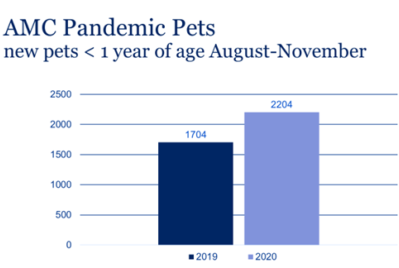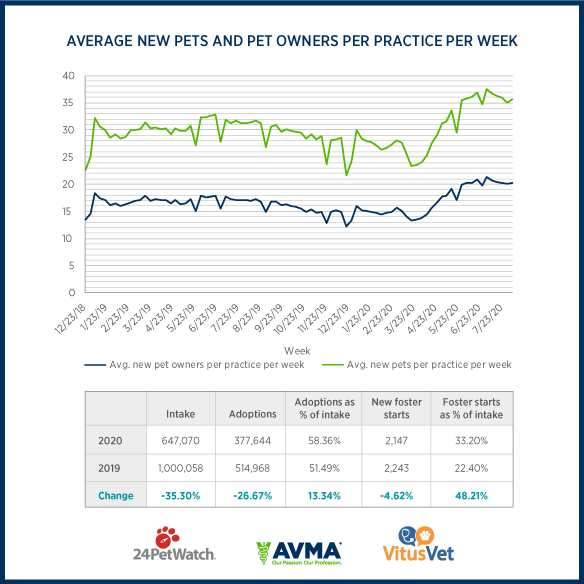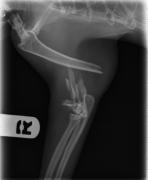Has the COVID-19 Pandemic Resulted in More Pets?

Has the COVID-19 Pandemic Resulted in More Pets?
Since the pandemic started, there have been multiple news articles about pandemic puppies, increases in pets in foster care, and pandemic puppy scams. But how much of this is true and how much is hype? Here are my thoughts and analysis on the topic.
Is AMC seeing more puppies and kittens?
I asked our systems analyst to query the medical record system for me. The graph above shows the number of new puppy and kitten patients (under the age of 12 months) seen at AMC between August and November 2020 compared to 2019. You can see there is nearly a 25% increase in puppies and kittens seen during the pandemic months of 2020. Additionally, there was not a concurrent increase in total caseload, suggesting the pandemic did result in a greater proportion of puppies and kittens seen at AMC when compared to a non-pandemic year.
What does AMC’s admission list tell us about new pet ownership?
I often write about the overnight admission list from AMC’s ER. Based on a glance at the admission list last week, puppy and kitten admissions are increasing. AMC tends to treat more geriatric patients because our board certified specialists have expert skills in caring for older pets. But one night last week, four pets under the age of six months were admitted to the hospital, an unusually high number. There was an eight-week-old Bernadoodle, a six-month-old Chihuahua, an 18-week-old Australian shepherd and a four-week-old Siamese kitten that had fallen from a fourth-floor window.
The Chihuahua was diagnosed with canine parvo virus infection. There have been reports of increased numbers of puppies with canine parvo virus infection during the pandemic. The Chihuahua puppy was just one of a number of puppies AMC has cared for during the pandemic with this preventable disease.
What about other veterinary hospitals and shelters?
The chart below from the American Veterinary Medical Association shows an increase in both new pets and new pet owners seen at veterinary hospitals starting in late March of 2020, corresponding to the start of the pandemic. The bottom half of the chart compares shelter intake between 2019 to 2020. You can see shelter intake was down, but adoptions and fosters as a percentage of intake was up. This means that there are less animals in shelters – likely due to pandemic work restrictions and social distancing – but there’s increased interest in adopting and fostering those animals, which is a good thing.
The Bottom Line
Although the data is not as clear cut as some media outlets portray it, new pets do appear to be increasing in our homes, suggesting a new chapter in the human-animal bond.
Readers may be interested in AMC’s upcoming virtual lecture on January 14th – “Bonding with Your Dog: Overcome Training Challenges by Strengthening Your Relationship” – presented by author, speaker and dog trainer Victoria Schade and AMC’s Usdan Institute for Animal Health Education.


































